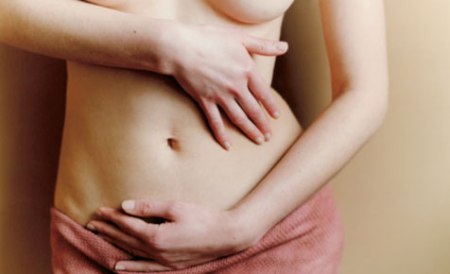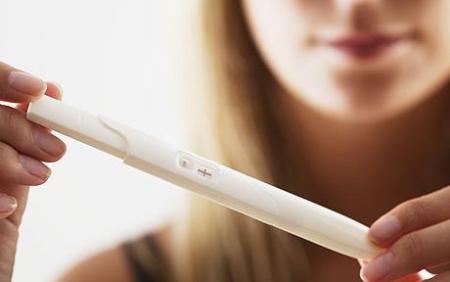The most precious moment in the life of a woman is becoming a mother. A woman goes through a lot of changes very gradually from the day of conception to child birth. These changes can be seen physically and also felt mentally. When a few symptoms of pregnancy like missed period or spotting, nausea, darkening of areolas, soreness of breast, fatigue, morning sickness or frequent urination are seen, then pregnancy can be confirmed with an HCG test. The first few weeks of fetal development is useful knowledge for every mother.

Fetal development after conception

The fetus after conception (fertilization) undergoes gradual changes every day. Fertilization is the process in which the healthy sperm from a man combines with egg (during ovulation period of women) to form a single cell embryo called zygote. The zygote contains 46 chromosomes. Where 26 chromosomes come from mother and 26 chromosomes come from father. These chromosomes carry genetic information.
First week

In about 24-30 hours after fertilization, the first cell division takes place in uterus. Mitotic cell division takes place to form two daughter cells. These two daughter cells are called blastomeres. Each blastomer is capable of carrying on independent mitotic cell division process to form further new cells. Thus, two cells become four, four cells become eight and this process is continuous. But this cell division will not result in increase in size of embryo because initially each cell will become smaller after the cell division process. They are tightly packed now.
At this stage, the mother can confirm pregnancy with Early Pregnancy Factor (EPF) test of mother’s blood. The embryo will be moving at this stage and is protected by zona pellucida layer. After 3 days with about 12-16 cells, the embryo looks like a ball and is called as morula. In about 4 days, the hormone progesterone is released. This hormone relaxes the uterine walls. On reaching the uterus, the embryo is called blastocyst. Zona pellucida degenerates at this stage.
Second week

In about 6 to 12 days, the free blastocyst in uterus tries to attach to uterine wall. From here it develops into a healthy human baby.This process of attachment in uterus is called implantation. The outer layer cells of blastocyst is called as trophoblast cells. In the attachment phase of implantation, the trophoblast cells provide adhesive substance to get the embryo attached to the epithelial cells of endometrium. After successful attachment, the trophoblast cells share the available nutrients and water with the inner cells for growth. This outer layer forms the yolk sac structure.
A transparent amnion sac is formed by the end of second week. At this stage, human chorionic gonadotropin( HCG) hormone is released. The mother can confirm pregnancy using HCG test of blood or urine. The placenta and umbilical cord develop to support passage for oxygen, food, water and other nutrition from mother’s blood stream to developing fetal. This line is also used to remove the waste such as carbon dioxide and other waste from the developing embryo.
Third week

The fetus starts to develop as a human from the 3rd week. Within just 10 days after implantation, fetal heart starts to beat. The process of hematopoiesis in which blood cell are formed happen in this stage. This complements the formation of heart. The stem cells start to divide. The three layer of cells namely ectoderm, endoderm and mesoderm develop at this stage. Ectoderm helps in the formation of skin, nails, hair and sweat gland. Neuro ectoderm cells gives rise to brain, spinal cord and related nervous system.
The respiratory system and gastro intestinal tract start to develop at this stage with the supply of endoderm cells. Mesoderm gives rise to somites which are needed to form the skull, ribs and backbone. Mesoderm also takes care of development of organs like brain, kidney, lungs, heart, urinary system and reproductive system. The basic growth of the fetus takes place with the development of vital organs like heart, brain, spinal cord and gastrointestinal tract. The three sections of brain namely forebrain, midbrain and hind brain appear distinctly at this stage. By about 17 days, the thyroid gland develops. This gland helps to increase the metabolic rate.
Fourth week

By the beginning of fourth week, the fetal heart beats at 105 to 121 beats per minute. The body structure starts to develop at this stage. The folding structure of embryo with chest and abdomen development happens here. The yolk cavity forms the lining of respiratory and digestive tract. Limb buds appear both in upper and lower part of body which causes development of arms and legs in the later stage. Dermis layer that support muscle growth and voluntary motion is formed now.
Skeletal development is seen rapidly. Hence, it enables the embryo to show movement. The most important change is the amniotic sac that surrounds the embryo. The amniotic sac started to develop in second week. Now at the end of fourth week, the amniotic sac enlarges to cover the growing embryo and the sac is filled with amniotic fluid. The amniotic fluid is required specially for the proper development of lungs. This fluid also allows the embryo to suspend freely in a sterile environment.
Things to remember

For proper and healthy fetus growth, pregnancy should be confirmed at the earliest. Home pregnancy tests, like the pregnancy test strip, can be used for this purpose. When the urine test is positive, fix an immediate visit to doctor. Confirm the pregnancy with a blood test. This serum beta test will show the accurate level of HCG. Sonography is used to avoid complications associated with pregnancy like an ectopic pregnancy. This test is also necessary in later stages to confirm the proper growth of fetus. In early pregnancy, a transvaginal scan is done. Later, abdominal scan is prescribed. The mother should follow a strict diet and course of medications as instructed by the doctor. More than all medications and regular check ups, it is very important for the mother to be happy and stress free. It is found that mothers who are unhappy or in great stress will give birth to children with mental disorders. Have a happy pregnancy!


